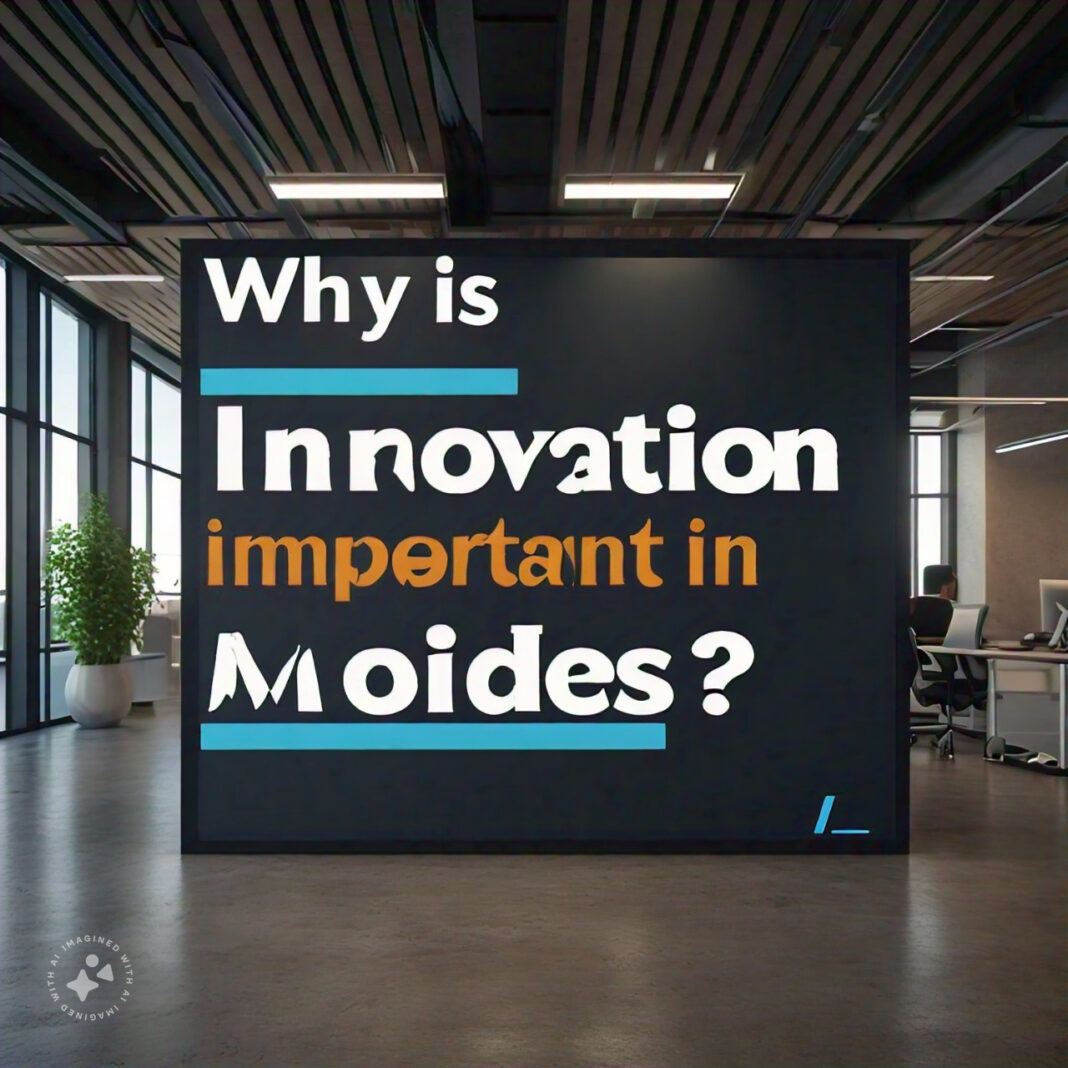Innovation is the real lifeblood of modern business. It is the driver of growth, the source of competitive advantage, and a key to long-term success. As far as strategies for innovation are concerned, there is not one solution that fits all.

Firms need to choose the right strategy or blend of strategies that work best to achieve their objectives, matched with available resources and market position.
This discusses various innovation strategies available for any business. These strategies may be different in number, depending on how they may be categorized, but we shall focus on the most recognized and effective approaches. In understanding these different strategies, businesses can make informed decisions on how to approach innovation in a way that best suits their unique circumstances.
Any innovation strategy, from incremental to disruptive, includes different advantages and challenges. We will look closely at each strategy using examples and insights that explain how to apply them in reality.
Let us undertake the journey across the landscape of innovation strategies and see how they can shape the future for businesses across various industries.
- Incremental Innovation Strategy
Probably the most common pathway of innovation is incremental innovation, which involves small, incremental steps of improvement toward existing products, services, or processes.
Characteristics:
- Low risk
- Continuously improving
- Builds on existing knowledge and technologies
Examples:
- Yearly releases of new smartphones, with a bit better features every time
- Automakers introducing new safety features in existing models
- Software houses release updates regularly with minor enhancements
Advantages:
- Maintains market position
- Improves customer satisfaction
- Cost-effective
Challenges:
- Not much competitive advantage
- This can lead to complacency
Incremental innovation is safe and steady, and can be used to sustain a company to retain its position in the market and satisfy customers. Nonetheless, over-reliance on this strategy exposes one to a more strong competitor or to disruptive innovations.
- Disruptive Innovation Strategy
Disruptive innovation is a term coined by Clayton Christensen and refers to innovations that create new markets or value networks and, over time, disrupt existing ones.
Some key features of this type of innovation include the following:
- High-risk, high-reward
- It often comes out of niche or low-end markets.
- Can make current products or technologies obsolete
Examples:
- Netflix disrupted the video rental business.
- Airbnb challenged traditional hotel accommodations.
- Electric vehicles disrupted the automotive industry.
Advantages:
- The potential for rapid growth and dominant market position.
- New market or customer segment creation
- Strong competitive advantage
Advantages:
High risk of failure
Significant resources and commitment required
Resistance from established players likely to be faced
Though disruptive innovation can result in enormous success, such successes are not without risks. Any company that embarks on this pathway needs to be prepared for failures that may occur and have the stamina to press on despite the hurdles that are bound to come their way.
- Architectural Innovation Strategy
Architectural innovation is the recombination of existing technologies or components in new ways. That is, it does not offer radically new technologies; it puts the existing technologies together in new ways.
Key characteristics:
- Builds off existing technologies
- Often crosses industry boundaries
- Can open up new markets or applications
Examples:
- Apple’s iPod: It brought all of the existing technologies together in a new way.
- 3D printing
- Smartphone applications that integrate several technologies existing at that time
Benefits:
- Inherent risks are much less compared to developing entirely new technologies
- Huge competitive advantages can be reaped
- New product categories are often created
Disadvantages:
- Requires deep knowledge of several technologies
- Integration problems may be faced
- Intellectual property issues
Architectural innovation can aid firms in coming up with new product lines or even entering new markets without running into the same amount of risks involved in the development of absolutely new technologies.
- Radical Innovation Strategy
Radical innovation is a step into the absolute creation of something new, normally based on new scientific discoveries or technologies that emanate from breakthroughs.
Metaradical characteristics:
- High-risk, potentially high return
- Often requires significant R&D investment
- Can create new industries or markets
Examples:
- The invention of the Internet
- Development of CRISPR gene-editing technology
- Creation of artificial intelligence
Benefits include:
- Enormous potential for growth and market leadership
- Creation of robust intellectual property positions
- Solving hitherto unsolvable problems
Challenges:
High risk of failure
Requires major resources and long-term commitment
Risk of regulatory or ethical issues
Of the innovation strategies, radical innovation is the most ambitious and the most risky. It’s typically pursued either by large corporations with major R&D budgets or by venture capital-backed start-ups.
- Business Model Innovation Strategy
Business model innovation concerns changing how a company creates, delivers, and captures value, in contrast to focusing on innovations only in products or services.
Characteristics:
- Applicability across industries
- Most of the time, enablement by technology drives new business models
- Can be disruptive to current norms within industries
Examples:
- The ride-sharing model of Uber
- Subscription-based services of Netflix or Spotify
- Freemium models for many software companies
Benefits:
- Can gain significant competitive advantages
- Often leads to improved customer experiences
- Rapid Growth Scalability
Disadvantages:
- Major Organizational Overhaul might be necessary
- Resistance from Incumbents or Regulators
- A great deal of knowledge about the customer and market dynamics needed
Business model innovation can become an effective lever for companies to establish differentiation and new value creation and profitability, even in saturated business sectors.
- Open Innovation Strategy
Open innovation is the innovation practice of an organization that opens up its boundaries to external partners, customers, suppliers, or even competitors through various processes and transactions that enable them to innovate.
Characteristics:
- Taps into external knowledge and resources
- Helps increase the speed of innovation processes
- Normally involves partnerships or collaborations of some kind
Examples:
- Procter & Gamble’s Connect + Develop program
- Linux and other open-source software projects
- NASA’s use of crowdsourcing for problem-solving
Benefits:
- A much larger base of ideas and expertise is made available.
- Risks and costs are shared.
- Cycles of innovation can be faster.
Challenges:
- Intellectual property management
- Coordination and communication across organizations
- Loss of control over the innovation process
Open innovation helps a company to access new ideas and technologies much faster and at a more reasonable cost than it could in-house.
- Reverse Innovation Strategy
Reverse innovation starts with developing products or services in emerging markets and then adapting them for developed markets.
Key characteristics:
- It always starts in emerging markets
- It’s cost-effective
- Can spur disruptive innovations in developed markets
Examples:
- The portable ultrasound machine of General Electric, was developed in China and later sold globally
- Tata Nano, the ultralow-cost car from India
- M-Pesa, the mobile payment system from Kenya
Benefits:
- Access to a fast-growing emerging market
- Developing cost-effective solutions
- Potential for disruptive innovations within the developed markets
Challenges:
- A deep understanding of emerging market needs required
- Possible problems in product adaptation for developed markets
- Brand perception problems may arise
Reverse innovation helps companies access the tremendous potential of emerging markets while developing innovations that can disrupt developed markets.
- Sustainable Innovation Strategy
Sustainable innovation is a process of developing products, services, or processes with either positive environmental or social impact while at the same time being economically viable.
Characteristics:
Balances economic, environmental, and social considerations
Reaches back to rethink whole value chains
Has huge potential for opening up new markets or customer segments
Examples:
- Tesla’s electric vehicles and renewable energy solutions
- Clothing produced by Patagonia in an environmentally friendly way
- Circular business models that reduce waste of the circular economy
Benefits: - Aligned with increasing consumer demand for sustainable products
- Potential cost savings through resource efficiency
- Positive brand impact and customer loyalty
Challenges: - Significant upfront investments required
- Balancing sustainability and profitability
- Measuring and communicating impact
Sustainable innovation will gain still more relevance as consumers, investors, and regulators increasingly focus on environmental and social responsibility.
- Frugal Innovation Strategy
Frugal innovation involves developing good enough products or services for resource-constrained customers, mostly from emerging markets.
Characteristics:
- Focus on low cost and simplicity
- Often stripping down products to core functionalities
- This can result in innovations that apply to developed markets
Examples:
Jaipur Foot—low-cost prosthetic limb
- Mitticool: an electricity-free refrigerator made of clay
- Aravind Eye Care System: low-cost eye care, India
Advantages:
- Access to large unserved markets
- Low-cost development of solutions
- Innovations can be used globally
Disadvantages:
- Price pressure as well as quality and functionality
- Perception issues in the developed markets
- An in-depth understanding of the needs of the target market is a precondition.
It can also help companies tap into vast markets of price-sensitive consumers while developing relevant, cost-effective innovation skills that apply everywhere.
- User-Led Innovation Strategy
It involves the direct engagement of users or customers in the process of innovation, often through co-creation or crowdsourcing.
Key characteristics:
- Direct participation of users in the innovation process
- Often makes use of digital platforms for reaching out
- Potential for very relevant innovations
Examples:
- Lego Ideas platform of user-submitted designs.
- Crowdsourced vehicles from Local Motors
• T-shirt company Threadless crowdsources designs
Benefits:
• In-depth knowledge of the user’s needs and preferences
• Increased chance of market acceptance
• Customer relationships are strong
Challenges:
• Managing a high number of ideas or contributions
• Concerns related to intellectual property
• Balancing user input with corporate vision and capabilities
Customer-driven innovation can thus assist firms in developing very need-closed products and services for their customers. This will increase the opportunity for market success.
Conclusion:
This would bring the total number of strategies for innovation existing for a business to so many, as we have gone through this inclusive guide. Though we have dwelled on ten major strategies, these are not mutually exclusive. Indeed, many of the successful companies out there use different combinations, upon which their innovations would bank, depending on specific project conditions and organizational goals.
As one looks through the many possible innovation strategies, some factors should direct and aid in the choice of the best. These include:
- Company goals and vision
- Available Resources and Capabilities
- Market Position and Nature of Competition
- Industry Dynamics and Technological Trends
- Needs and Preferences of Customers
- The Regulatory Environment
The best innovation strategies, however, are normally aligned closely with the overall business strategy. For example, a company aimed at cost leadership might focus much on frugal innovation or incremental improvements to raise efficiency. A company competing on differentiation may instead be more focused on radical innovation or user-led strategies meant to create unique value propositions.
It is also important to remember that innovation landscapes are constantly changing. New technologies, shifting consumer behaviors, and global challenges like climate change all open up new opportunities and imperatives for innovation. Therefore, companies cannot be locked into one type of approach toward innovation but have to maintain flexibility and adaptability to respond accordingly to changes in the circumstances.
In other words, as there exists no exact count, what matters is how these diverse approaches to innovation strategies can be usefully employed by companies to make effective decisions about how to drive growth and create value. Innovation, whether through incremental improvement, disruptive breakthroughs, or new business models, remains one of the major drivers of business success in this century.
The key to successful innovation lies in having a culture of innovation in the organization through encouraging creativity, taking calculated risks, learning from failures, and relentless focus on creating value for customers and other stakeholders—not in the choice of the right strategy.
As you think of your approach to innovation, remember that the greatest innovators are those who have remained curious, adapted continuously, and learned persistently. You’ll be better placed to set your organization on the road to real success within the more complex and faster-moving business environment you thoughtfully envisioned when you choose and apply the relevant strategies for the situation.






